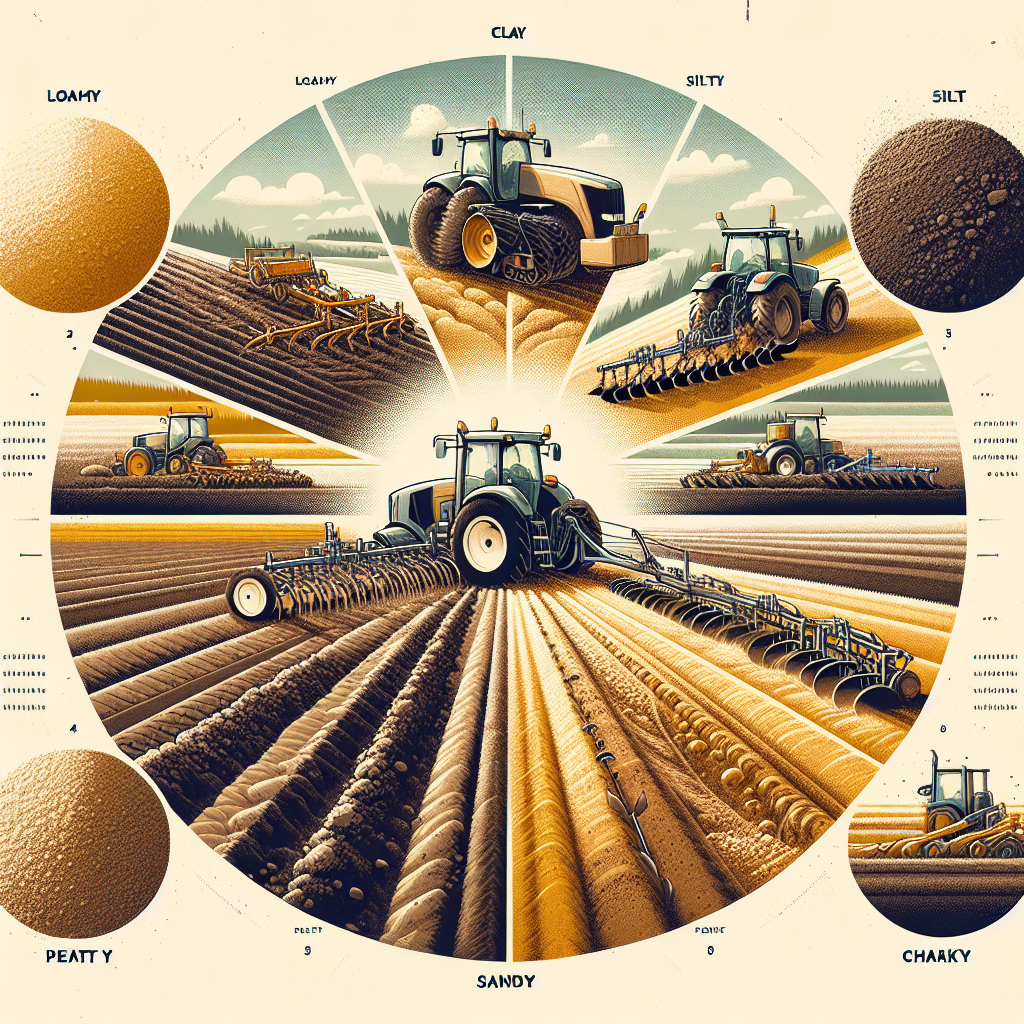Choosing the right plowing technique for your soil type is crucial for ensuring optimal crop growth and soil health. Different soil types require different approaches to plowing, and understanding these nuances can make a significant difference in your agricultural productivity. This article will guide you through the various plowing techniques and how to select the best one for your specific soil type.
Understanding Soil Types
Before diving into the different plowing techniques, it’s essential to understand the various soil types and their characteristics. Soil can generally be classified into several categories: sandy, clay, silt, loam, and peat. Each type has its unique properties that affect how it should be plowed.
Sandy Soil
Sandy soil is characterized by its large particles and gritty texture. It drains quickly but doesn’t retain nutrients well. This type of soil is easy to work with but requires frequent watering and fertilization.
Clay Soil
Clay soil has very fine particles that stick together, making it dense and heavy. It retains water well but can become compacted easily, which can hinder root growth. Proper plowing is essential to break up the compacted layers.
Silt Soil
Silt soil has medium-sized particles and feels smooth to the touch. It retains moisture better than sandy soil but can also become compacted. It is fertile and good for growing crops but requires careful management.
Loam Soil
Loam soil is a balanced mixture of sand, silt, and clay. It is considered the ideal soil type for most crops due to its excellent drainage, nutrient retention, and ease of cultivation.
Peat Soil
Peat soil is rich in organic matter and retains a lot of moisture. It is acidic and requires proper management to balance its pH levels. This soil type is less common but can be very fertile with the right treatment.
Plowing Techniques
Now that you have a basic understanding of soil types, let’s explore the different plowing techniques and how they can be applied to each soil type.
Moldboard Plowing
Moldboard plowing involves turning over the top layer of soil to bury weeds and crop residues. This technique is particularly effective for clay and loam soils. It helps to break up compacted layers and improve soil aeration. However, it can be too aggressive for sandy soils, leading to erosion.
Chisel Plowing
Chisel plowing is a less aggressive method that involves using chisel-shaped blades to loosen the soil without turning it over completely. This technique is suitable for silt and loam soils, as it helps to break up compacted layers while preserving soil structure. It is also beneficial for sandy soils as it minimizes erosion.
Disk Plowing
Disk plowing uses concave disks to cut and turn the soil. This method is effective for breaking up heavy clay soils and incorporating organic matter. It is also useful for silt and loam soils but should be used cautiously on sandy soils to avoid erosion.
Rotary Plowing
Rotary plowing involves using rotating blades to break up and mix the soil. This technique is versatile and can be used on various soil types, including sandy, silt, and loam soils. It is particularly effective for incorporating organic matter and improving soil structure.
No-Till Plowing
No-till plowing is a conservation technique that involves minimal soil disturbance. Instead of traditional plowing, seeds are directly planted into the soil. This method is suitable for all soil types and helps to preserve soil structure, reduce erosion, and improve water retention. It is particularly beneficial for sandy and peat soils.
Choosing the Right Technique
To choose the right plowing technique for your soil type, consider the following factors:
- Soil Structure: Assess the soil’s texture and compaction levels. For compacted clay soils, moldboard or disk plowing may be necessary. For sandy soils, chisel or no-till plowing is recommended.
- Crop Requirements: Different crops have varying root structures and nutrient needs. Choose a plowing technique that supports the specific requirements of your crops.
- Environmental Impact: Consider the potential for soil erosion and nutrient runoff. No-till and chisel plowing are more environmentally friendly options.
- Equipment Availability: Ensure you have access to the necessary equipment for your chosen plowing technique. Some methods require specialized machinery.
Conclusion
Choosing the right plowing technique for your soil type is essential for optimizing crop growth and maintaining soil health. By understanding the characteristics of your soil and the various plowing methods available, you can make informed decisions that will benefit your agricultural practices. Whether you opt for moldboard, chisel, disk, rotary, or no-till plowing, the key is to tailor your approach to the specific needs of your soil and crops.
